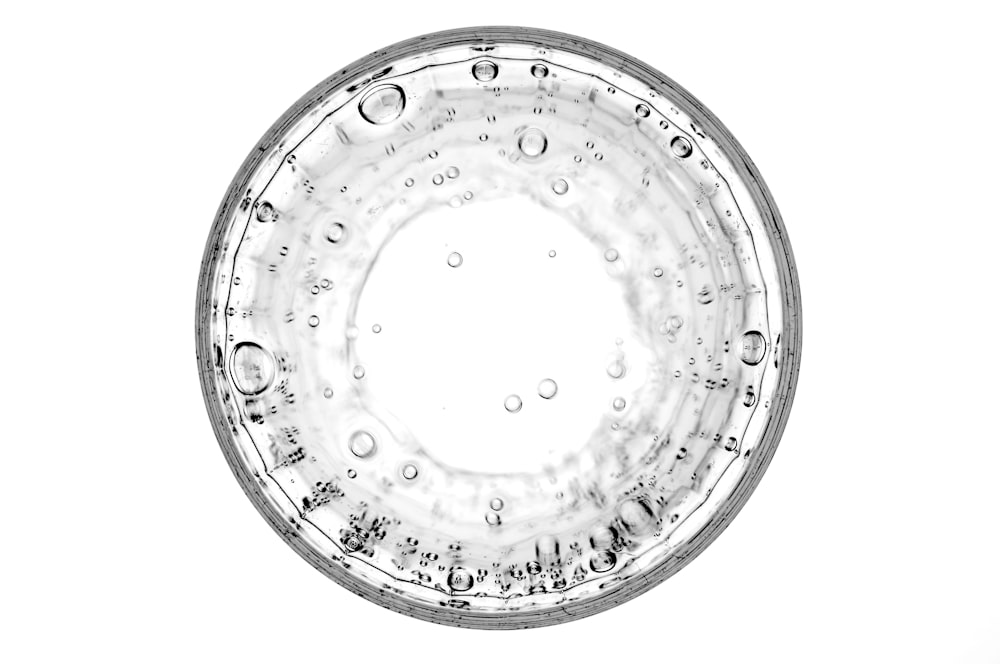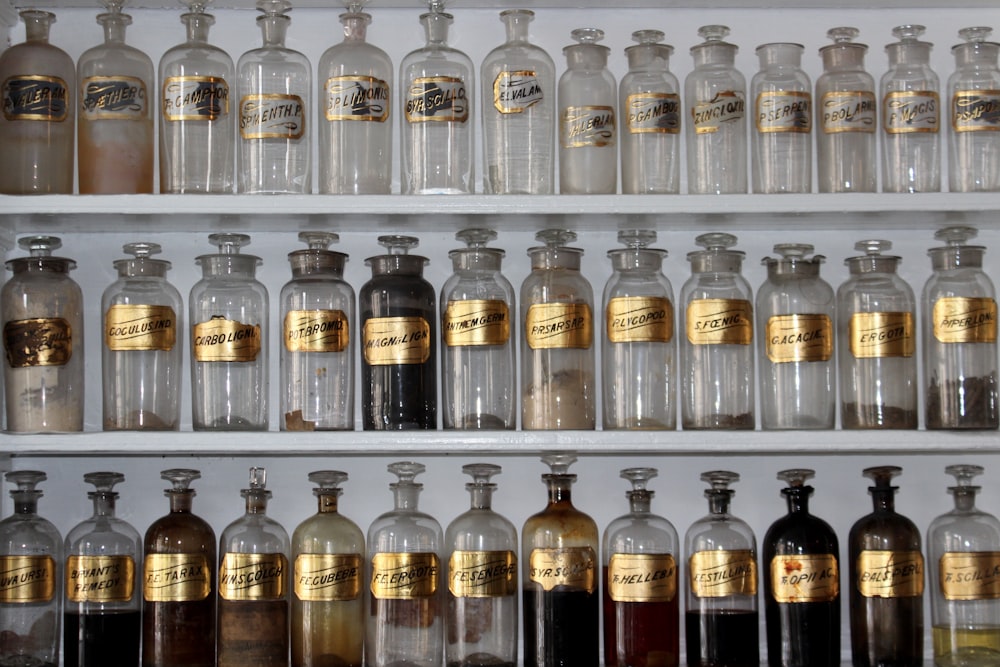Skincare is a natural science experiment
When Nicole Jackson was 13, she tried to treat her acne with lemon juice. The result was a chemical burn that forced her to wear Vaseline on her eyelids for three months. In retrospect, says Jackson, her constant experimentation — before she really understood the science of skin — was part of the reason she had terrible skin growing up.
For her 16th birthday, Jackson asked her mom for ingredients (clay, shea butter) from a raw materials site and started trying to make her own lotions and creams. Jackson went on to study international business at Mary Baldwin University in Virginia, and when the time came to look for a job, she knew she wanted it to involve beauty products. “I loved skincare, but I didn’t have a word for what I wanted to do,” says Jackson, now 21. “I loved reading about ingredients and how they work and why, but I didn’t want to do dermatology or diagnose diseases.”
What Jackson really wanted, she now knows, was to be a cosmetic chemist, a scientist who works on manufacturing skincare and beauty products. But she didn’t realize that the job existed and didn’t really understand that her love of beauty products was connected to science. She started Googling words like “skincare manufacturers” and putting out feelers for the options that might be out there.
Skincare is a big business: more than $18 billion in 2017, according to Euromonitor, a market research provider. The market has been growing steadily in the past few years, and though Euromonitor does not break down its analysis by gender, the majority of skincare products are marketed toward women. And like many things that are geared toward women, skincare is often considered frivolous, a scam that is all marketing and no result.
Marketing hype does exist, and it feeds on the social expectation that women should always look young and dewy. But it is simply false to claim that skincare has no basis in science. “The skin is one of the body’s organs,” says Ronni Weinkauf, vice president of applied research at L’Oréal USA. “Things go wrong, it evolves, and there are ways to make the skin more healthy.” Weinkauf has a PhD in medicinal chemistry from Rutgers University and leads a team of scientists that includes biochemists, chemical engineers, biomedical engineers, and more to develop new products.
Skin is biological material that reacts to different chemicals in different ways. It is the scientific consensus, for example, that sunscreen prevents cancer. Sunscreen absorbs ultraviolet light from the sun, light that would otherwise go into the skin and either directly damage DNA or create unstable atoms called free radicals, explains Michelle Wong, who runs the popular beauty blog Lab Muffin. Wong is a Sydney-based high school science teacher who has a PhD in analytical chemistry.
Similarly, a lot of research supports petroleum jelly as the best moisturizer and backs up claims that ingredients derived from vitamin A (like adapalene) fight wrinkles by changing how the skin cells differentiate and grow.
Many studies suggest that less acidic cleansers are best for sensitive skin. Acid is measured on a scale of 1 to 14 pH; the most acidic rating on the scale is 1. Acidity in cleansers matters because the surface of our skin has a film of sweat and oil called the acid mantle, which protects the skin. Normally, this protective barrier has a pH between 4 and 6, says Wong. This delicate chemical balance can be disturbed if someone is repeatedly cleaning with a high pH, leading to irritation and dryness. Cleansers were traditionally formulated at a higher pH, adds Wong, though nowadays most of them have adjusted downward, and it’s probably not worth paying extra for those products that claim to be “pH balanced.”
“I never really thought before that skincare is chemistry. There are very clear rules for what works and why.”
At L’Oreal, the biomedical engineers help evaluate the skin on a microscopic level to understand how the products interact on its surface, according to Weinkauf. Chemists investigate the ingredients and make sure they work and are stable and safe. Products have to be made of materials that not only work, but look and smell good. That’s where the polymer and materials scientists come in.
Weinkauf, who is involved in recruiting, says that she’s had a fairly even balance of male and female scientists on her teams. But in recent years, she’s seen more women coming to the company with a specific interest in skincare science. “It’s a very personally relatable area,” she says. “If you put the cream on your skin, it works or it doesn’t, and it allows more people to become more knowledgeable about products and science and become semi-experts.”
Skincare is a natural science experiment, and the rise of skincare and beauty blogs has helped women learn the basics to become these so-called semi-experts. “Every once in a while, I’ll get someone asking me how to study science and get into formulations,” says Wong. “I also have a lot of adults who tell me, ‘Oh, you’ve made me really interested in chemistry. If I knew in high school that it’d be so useful, I would have paid attention.’”
Wong started Lab Muffin in 2011 after she became frustrated by the lack of science-based beauty reviews. Today, she is also a moderator for r/skincareaddiction. “I kept running into all these myths I knew were myths, and the only other explanations online were either too complicated or condescending or written in a really dry manner,” she says.
“The lack of independent research is a problem because, of course, company research is skewed toward good results.”
Wong covers topics like pH, the science of face washing, the difference between skin purging and breaking out, and what types of microorganisms cause acne, frequently reading scientific articles from peer-reviewed journals. “Everyone has blind spots in their knowledge, but there are so many scientific topics in skincare that I’ve never run out of topics to research and write about,” she says.
And while there are plenty of tried-and-tested solutions, there’s plenty of bad science to debunk, too. “Most of the research on ingredients in skincare products are based on in vitro data, which is what happens inside a Petri dish,” Wong says. “But just putting ingredients on cells in a dish doesn’t give you the full picture compared to what’s happening in your skin.”
In other cases, there will be a lot of unsupported excitement over an ingredient like peptides, protein fragments that are supposed to supposed to strengthen the skin. But research on peptides has mostly been done by people selling the peptides, Wong says. “The lack of independent research is a problem because, of course, company research is skewed toward good results.” It’s not necessarily that evidence has shown peptides are useless. There’s just not high-quality evidence in support, and the jury is still out.
Unlike Wong, Jude Chao of Fifty Shades of Snail doesn’t have a background in science. She went to a math and science high school, but preferred the English classes. “I slept through all my chemistry classes and my bio classes, and that’s a pretty big regret,” says Chao.
In her 30s, she began to be interested in skincare for a very common reason: she didn’t like the way her own skin looked. “I thought, ‘I’ll just figure out the one thing that works for me,’” says Chao. “But I had a lot of catch-up to do on really basic things. I never really thought before that skincare is chemistry. There are very clear rules for what works and why, and there’s a lot of research that goes into it and it’s a whole area of formulation.”
Researching products has not only taught her about chemistry concepts, but also pushed her to be more critical of the world of science and the way it’s presented. Chao reads academic papers and has learned to check if there’s a really small or skewed sample size or other problems with the study design.
For example, Chao points to one popular study that seems to suggest that sunscreen is unsafe. Looking more closely at the study’s methods reveals that it was done on rats who ingested an incredible amount of the substance. For humans, it is “essentially unattainable” to use the same amount of sunscreen; it’d mean something like thickly smearing 100 percent of the body with sunscreen every day for 70 years.
“I think a lot of people hear ‘there’s research, there’s a study,’ but there’s not enough people going, ‘Yeah, but does that study really come to the conclusion that you’re saying?’” says Chao. “There’s enough of a respect for science that people want to believe in things that seem scientific, but they don’t want to evaluate the claims carefully. There’s not enough of a focus on scientific literacy.”
“I still wish I had known about this earlier. It’s something you don’t come across unless you do more digging.”
With so much to learn, how can a novice become educated? Don’t worry about understanding broad concepts, says Chao. Just think about your own skin goals — like anti-aging or acne — and start with ingredients that are supposed to help that. Start there, and you’ll gradually pull in more and more information. And over time, she adds, you’ll be able to recognize when cosmetics marketing is trying to make you think something is more advanced than it is. “Companies will have pretty pedestrian ingredients — like hyaluronic acid and water — and they’ll call it ‘bio-plumping hyaluronic complex.,’” she says. “Starting with ingredients is a way to make sure you don’t get pulled in.”
Jackson, the woman Googling for skincare jobs, ended up working as a manufacturing associate in a skincare lab of Boston-based Silk Therapeutics after graduation. Silk contains proteins that are biologically compatible with skin and can help it regenerate, and is often used in wound-healing materials. “I knew I probably couldn’t land a lab position, but I wanted something close to it,” Jackson says. The company creates skincare products using a form of liquid silk. Her job was to boil the silk cocoon, dissolve it in water, and then filter the solution to create the liquid silk.
Recently, Jackson moved to the skincare division. Now, instead of crushing cocoons, she’s a little closer to the actual products. Jackson spends her days mixing chemicals for products, following the formulations that Silk’s research and development team have created. She’s set on becoming a cosmetic chemist “sometime down the line” and is open to going back to school or getting a degree if necessary, but hopes to gain experience and move her way up.
“I still wish I had known about this earlier,” Jackson says. “It’s something you don’t come across unless you do more digging. I know more people would be interested if they knew this existed.”





